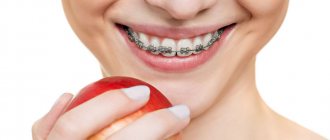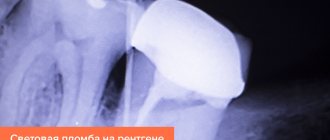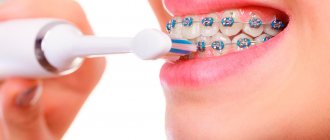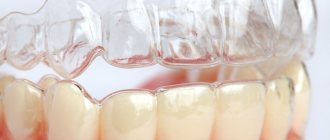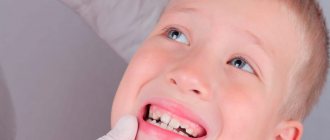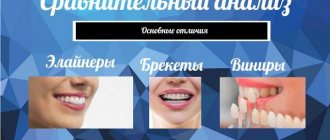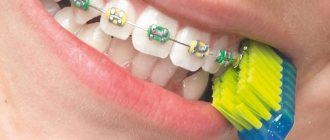What can you eat?
Sample menu for the day How to eat? What not to eat What not to do Features of care Braces are the most effective way to correct a bite. Treatment with braces is not only the work of the doctor, it is the effort of the patient himself. The structure must be monitored, hygiene procedures must be performed regularly and carefully, and certain dietary rules must be followed. But don’t think that semolina porridge is all you can eat with braces. Strict restrictions are needed only in the first days. Then the list of permitted products expands, although some prohibitions remain.
A proper diet will help protect the structure from damage and maintain oral health.
What can you eat in the first days after getting braces?
Almost immediately after fixing the brace system in the oral cavity, the patient will experience unpleasant sensations associated with increased pressure on the dentition. Chewing may cause severe pain. Therefore, experts recommend in the first days to give preference to soft and strained food. The following products and dishes are optimal:
- liquid porridge;
- soups;
- cottage cheese;
- kefir;
- yoghurts;
- jelly;
- vegetable puree, etc.
Recommendations for cleaning braces
The braces system requires daily care and cleaning. To do this you need to purchase the following devices:
- V-shaped brush.
- Cleaners.
- Super floss.
- Irrigator.
- Mouth rinses.
- Orthodontic wax (for application to individual structural elements to avoid damage to the mucous membranes).
Cleaning the mouth should be done no later than 10 minutes after eating. Each tooth should be brushed for at least 10 seconds, paying attention to each bracket and archwire. During the procedure, you need to rinse your mouth frequently to remove food from hard-to-reach places.
The final step is to clean the spaces between your teeth using dental floss and then rinse again.
What food is preferred throughout treatment?
When the patient gets used to the brace system, you can gradually expand the diet. The following is a list of products that will not cause any harm to the orthodontic structure:
- soups;
- yoghurts, kefir;
- soft cheeses;
- soft chicken fillet, thin sliced meat;
- fish, crab sticks;
- eggs;
- pasta;
- boiled rice;
- mashed potatoes;
- soft pastries, pancakes, bread crumbs;
- applesauce;
- bananas;
- jelly;
- milkshakes;
- vegetable caviar, stewed vegetables;
- cutlets, pureed meat.
The list of recommended products is quite large. It is important to understand that you should not bite hard food with your teeth. But if, for example, you grate an apple or carrot, you can eat them without fear for the safety of your braces.
Good to know. Braces are the best “nutritionist”. By adhering to some dietary restrictions, patients will receive not only straight and beautiful teeth, but also a slender figure.
Sample menu for the day
A properly selected diet will provide the body with minerals and vitamins to support healthy teeth.
Breakfast
- smoothies with the addition of any vegetables and herbs;
- fried eggs;
- well-cooked porridge, preferably passed through a blender;
- fruits;
- nut urbechi (without pieces), vegetable spreads;
- soft bread, preferably without crust;
- yogurt;
- cottage cheese.
Dinner
If you have to dine outside the home and need to take food with you, then the following are suitable:
- sandwiches made of soft bread with vegetable pastes, soft sausage or cheese, tuna;
- baby food in jars;
- boiled chicken, boneless;
- puddings;
- jelly;
- bananas and other fruits, if possible, cut them.
Dinner
- puree soup, any;
- mashed potatoes;
- steamed vegetables;
- paste;
- casseroles, meat, vegetable;
- beans;
- rice.
You can eat soft muffins, cookies, and sometimes chocolate (without fillers) with braces. Use them as a reward for following your braces diet.
Can braces come off?
The system is securely, but not tightly, attached to a special glue, and when biting on some products, its elements may come off. This most often occurs when eating solid foods. If one or more braces come off, you need to consult a doctor.
You can install braces at the Saint-Dent Clinic in Moscow. Qualified dentists of all specializations work here. The clinic uses advanced technologies and modern materials to treat patients. The contact page is located here Contacts. Patients can find out the cost of dental services here Prices for dental services.
What products are prohibited?
Of course, after some time the diet can be expanded. However, some things are best avoided until the moment your braces are removed. For example, biting into very hard fruits or vegetables, crackers and nuts can break the metal wire that connects all the staples. When an archwire is damaged, the pressure exerted on the teeth immediately changes. As a result, treatment may be less effective or completely useless.
Dense and sticky foods can cause staples to peel off from the enamel. Of course, thanks to the use of dental glue, they are attached quite reliably, but it is better not to take risks. First of all, you should give up foods such as seeds, nuts, dried fruits, crackers, caramel, candies, apples, carrots, etc.
In addition, sticky products are also prohibited. This includes toffee, nougat, dried fruits, cheese and much more. They can stick to the surface of the braces and accumulate in hard-to-reach places under the archwire and brackets. Removing them even with a toothbrush and irrigator can be very problematic. It is recommended to limit the consumption of fresh bread, chewing gum and even corn flakes. Dentists advise you to temporarily stop eating coloring foods, for example, beets, candies with a high content of dyes, etc. Otherwise, the staples may become stained and lose their attractive appearance.
Hard and sticky food
Eating solid foods leads to damage to the arch structure and displacement of the dentition. This also often causes locks to come unstuck. The following products are completely prohibited:
- nuts;
- crackers;
- seeds;
- hard treats (lollipops, caramels);
- hard fruits and vegetables.
Sticky and viscous products heavily contaminate the teeth and components of the orthodontic apparatus and are quite difficult to remove. They also cause the development of caries and inflammatory processes in the gums. You should refuse:
- soft sticky candies;
- chips;
- buns
- corn sticks and flakes;
- cheese;
- chewing gum.
How to eat correctly while wearing braces
To reduce the risk of damage to braces and the development of caries, you should follow a number of rules:
- cut food into small pieces or grate it;
- observe the temperature regime while eating;
- brush your teeth thoroughly in the morning and evening;
- use brushes and irrigators to clean braces;
- do not use toothpicks to remove food debris;
- limit your consumption of sugary foods;
- try to eat a varied diet.
It is also important to give up some habits that may not be related to nutrition, but can lead to damage to your braces. We are talking about chewing the tip of a pen or pencil and the habit of biting nails.
Hot and cold food
Even people with absolutely healthy teeth should not expose their teeth to sudden temperature changes. And if a person wears braces, eating too hot and cold food is completely prohibited. This is especially true for bracket systems, which contain thermoactive elements that can change their properties under the influence of temperature.
You should avoid the following foods:
- cold ice cream and desserts;
- hot soup;
- scalding coffee, tea and other drinks.
Optimal food temperature
The temperature of the food consumed is important. It must be strictly controlled to avoid negative consequences.
Food should not be cold or hot. Sudden temperature changes are especially dangerous because they lead to microcracks in tooth enamel. In addition, the structure can be cooled or heated, while maintaining the temperature for a long time. In this case, it is a catalyst for harmful effects.
Food of low or high temperature negatively affects the glue that fixes the system on the surface of the teeth. So it can come off easily.
When alternating contrasting temperatures (washing down ice cream with hot coffee), the design may change its color when interacting with heat-sensitive components. This not only affects its appearance, but can also lead to the destruction and replacement of the system.
Orthodontists and dentists recommend adhering to the following rules:
- Do not eat foods that are scalding hot. It should be as comfortable as possible for the oral cavity and tooth enamel, and not cause discomfort.
- Frozen fruits and berries are not recommended to be consumed immediately. You should wait until they defrost and reach a comfortable temperature.
- Eating ice cream is acceptable, but should be done as little as possible. Some experts believe that you should not eat ice cream while wearing braces, but this is not true. It is recommended to eat it with a spoon, separating small pieces. They must be placed just outside the dentition. It is highly undesirable to bite off whole pieces of ice cream with your teeth.
Drinking alcohol and smoking during braces treatment
Drinking alcoholic beverages is undesirable, as they contain large amounts of sugar, which has a destructive effect on teeth. After drinking even a small amount of alcohol, a wearer of braces will have to brush their teeth. If this is not done, in the future you will have to deal with caries and inflammatory processes of the gums. In addition, alcohol leads to dry mouth. And this entails the occurrence of wounds and ulcers.
Smoking can spoil the appearance of the structure by staining some elements. It also leads to staining of tooth enamel, but in the places where braces are attached, the enamel will remain the same color. As a result, after removing the system, contrasting stains will be visible on the teeth. It is very difficult to even out the color, since nicotine is difficult to lighten. If you cannot completely quit smoking, you must at least reduce the number of cigarettes you smoke.
Caring for braces after meals
If before braces you were able to get by with just chewing gum after meals, then with the installation of the system you will have to acquire a whole arsenal of care devices and include an additional 15 minutes in your lunch plan for dental care.
The ideal algorithm for brushing teeth with braces after eating looks like this:
- Cleaning your teeth with a special brush for braces with a recess for a row of clasps. Additionally, you can thoroughly clean the space around each bracket with a mono-beam brush.
- Cleaning hard-to-reach areas between the clasps and under the archwire using orthodontic brushes.
- Cleaning dental spaces with superfloss.
- Mouth rinse.
- Attaching elastic bands (if you wear them)
But if you don’t have time to do all this after every meal, then don’t forget about mouthwash and dental brushes to get rid of noticeable food residues under braces.
Advice from professionals
- If the orthodontist has given the patient specific recommendations regarding what foods should absolutely not be consumed during treatment, they should be strictly followed.
- You can only chew soft foods with your front teeth. It is better to chew other foods with your back teeth.
- If the patient feels hungry and has tooth pain at the same time, it is worth drinking a cool smoothie or milkshake. The cold will ease the pain, and the drink will reduce the feeling of hunger.
- In the first days after installing the braces system, you should not touch your lower teeth to your upper teeth, as this can cause pain.
How to eat with braces
Orthodontic structures are worn for a long time. In order not to damage them, you have to change not only your diet, but also your approach to nutrition.
1. Cut food into pieces
You won't be able to take a tasty bite of an apple or a carrot, or even a cucumber. The part may come off or the motion vector will shift. It’s not easy to give up the desire to take a bite; you’ll have to rebuild your habits. Corn is peeled off the cob with a knife, vegetables and fruits are cut into slices. It is better to cut even relatively soft products - the risk of structural damage will be reduced.
2. Chew only with the back teeth
The further the teeth are from the smile zone, the larger and stronger they are. Chewing with the back teeth reduces pain after installation and correction, as it reduces the load on the front teeth. It is best to immediately put food away from your mouth. It’s unusual at first, but then you quickly adapt.
3. Eat slowly
No matter how hungry you feel, you shouldn’t rush to eat. When a person is in a hurry, he forgets about the rules, especially in the first days. In a hurry, you can bite off a large piece rather than cut the product into slices. Chewing quickly increases the risk of injury.
4. Drink a lot of water
Water helps you swallow food that you may not have chewed well. It washes away food debris from teeth and structural parts.
Vegetables can be slightly simmered and broken up with a blender. Cut the fruits and make a puree. But you shouldn’t give up vegetables and fruits because of discomfort. They are an irreplaceable source of vitamins and minerals and play an important role in intestinal function. The diet should be varied, only the ways of consuming foods change.
Basic recommendations
In the first week after installation of an orthodontic product, patients usually experience discomfort and severe pain, sometimes even throughout the entire dentition. This occurs due to the beginning of the process of correcting the bite.
Toothbrush for cleaning braces
Correcting the bite using braces is one of the most effective methods in the field of orthodontics.
When a person eats food, the discomfort only intensifies. To minimize this condition, experts advise adhering to the following rules:
- Remove all solid foods from your diet. This is especially true for those products that require biting.
- For the first few days, do not eat nuts, candies or crackers. They increase the feeling of mobility of the teeth and provoke even more severe pain during chewing.
- During the adaptation period, try to eat only purees, cereals and soups. This will help prevent unnecessary stress on the jaw.
While you are getting used to braces, you need to carefully monitor your own feelings when eating any food. If a product only increases discomfort, it must be excluded from the diet.
Coloring chromogens
In addition to mechanical damage to the bracket system, an incorrectly selected diet can cause discoloration of its individual components.
Sapphire and ceramic designs are highly susceptible to this effect, but the greatest damage is caused to plastic models.
The porous surface of the braces allows tiny pigments present in a variety of foods to pass through. Not only the braces themselves undergo a color change, but also the ligature, power arc and fixing composition.
Chemical dyes that are used in the following products have the greatest coloring ability:
- sweet carbonated drinks;
- lollipops;
- store-bought fruit and berry juices.
Natural products can also cause staining of enamel and orthodontic components. The largest number of chromogens is present in beets, turnips, and dark berries. You should be careful when consuming coffee and tea, dark-colored sauces, and seasonings such as curry and turmeric.
Regular use of these products over time gives white braces a gray or yellowish tint, which can only be removed by replacing the structure.
Habits to give up
Try to eat at home, but if this is not possible, then hygiene products should always be nearby
Those who like to chew hard objects like pens and pencils will have to give up their habits during braces.
They can damage the structure of the system due to the contact of teeth with hard materials.
Also try to eat at home, but if this is not possible, then hygiene products should always be nearby.
These include special brushes, brushes, and floss.
Important! Don't put off brushing your teeth. Immediately after eating, perform oral hygiene. It can be supplemented with mouth rinses.
